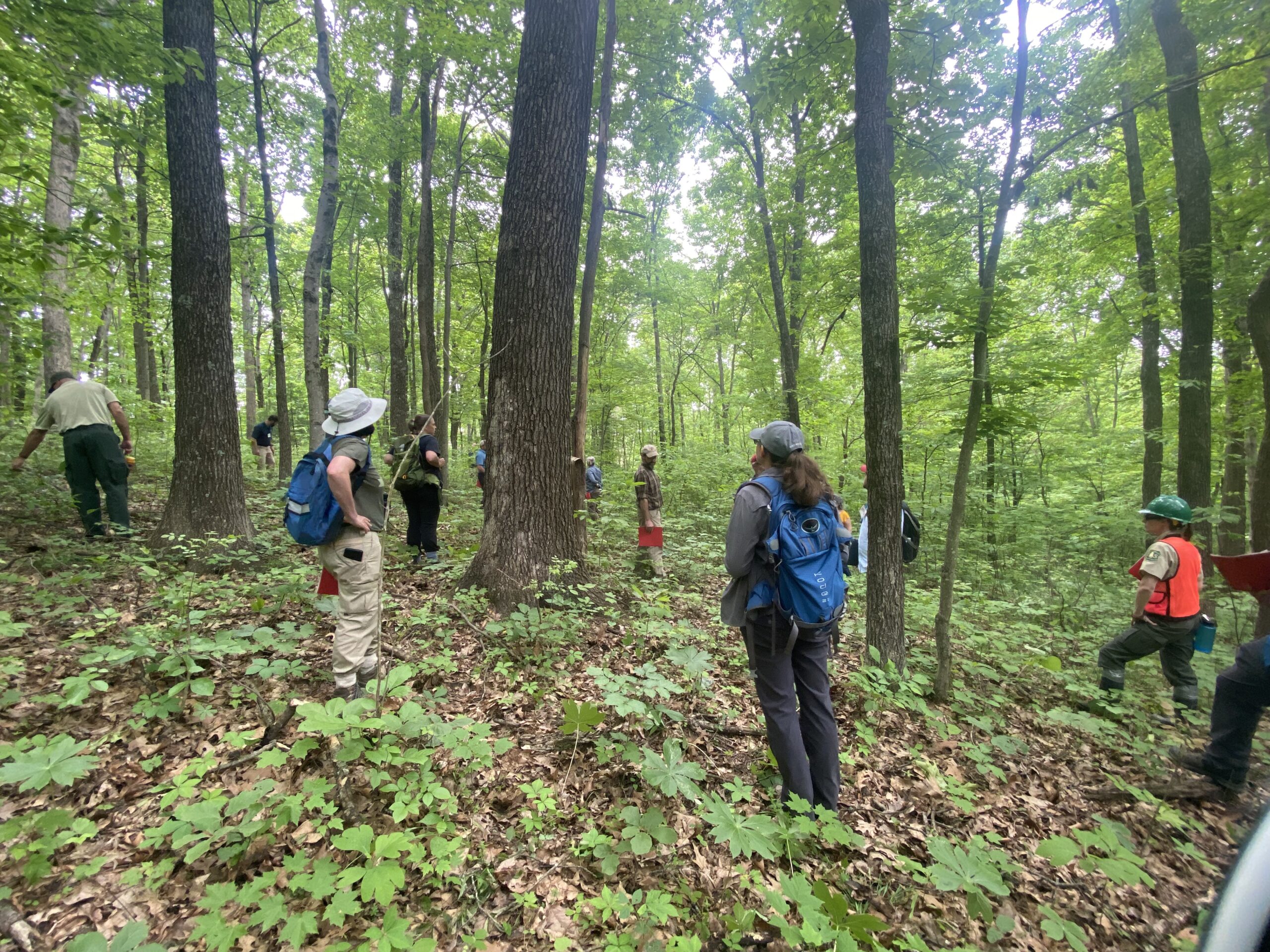Ohio Hills
Site Description
A team of managers and scientists from the Ohio Hills are participating in a study called the Adaptive Silviculture for Climate Change (ASCC) Network. The goals of this project are to test different silvicultural approaches to climate change and forest health adaptation that will also serve as useful examples across the U.S. and Canada.
The Ohio Hills ASCC study site is located within southeastern Ohio’s Interagency Forestry Team’s Collaborative Oak Management Region. The research units are distributed within Vinton Furnace State Forest, containing a 2,882-acre research zone that is surrounded by 9,393-acres of state forest and a 3,547-acre wildlife management area. Forest types ranging from dry to mesic species compositions dominated by white oak, black oak, chestnut oak, red maple, yellow polar, and sugar maple are promoted by variation in the dissected topography of the region.

Key Projected Climate Change Impacts
Key projected climate change impacts that the project team considered for the Ohio Hills include:
- Increased average annual temperatures
- Changing precipitation amounts and extreme weather events
- Increased risk of drought: reduced snowpack and increased water loss
- Increased invasive plants, pests, and pathogen
- Increased risk of wildfires
Climate change will present challenges and opportunities for accomplishing the management objectives of the Ohio Hills, including:
Challenges
- Increased risk of drought stress on regeneration
- Drier soil conditions in summer and fall, especially on south-facing slopes, may increase the risk of wildfire: Frequent fires have the potential to kill seedlings of many species, even those species that have relatively fire-resistant, thick bark as adults
- Changes in tree species habitat
- Increased frequency of extreme weather events (e.g., windstorms and ice storms) may lead to more frequent large-gap disturbances
Opportunities
- Longer growing seasons
- Increased fire frequency could help regenerate oak species and restore the understory composition to conditions prior to fire suppression
- Climate change capability is good to very good for most of the many species in southeast Ohio, including white oak, northern red oak, black oak, red maple, pignut hickory, mockernut hickory, sugar maple, black gum, and yellow-poplar
- Other common species are projected to persist over a smaller extent with fair to poor climate capability, including chestnut oak, scarlet oak, sweet birch, and American beech

Management Goals & Treatments
Implementation
A team of natural resource specialists from the Ohio Hills, regional managers, and scientists came together for a three-day workshop in May 2022 to develop the study design for the ASCC project site. Overarching management goals for the project include:
- Manage for a compositionally and structurally diverse sustainable oak ecosystem
- Consider visual aesthetics where timber harvesting is recommended
- Support Ohio’s timber industry by promoting important commercial species such as white oak
- Mitigate risks of invasive species establishment or spread
- Sustain and promote organismal and functional diversity
- Protect known or discovered archaeological resources
- Employ all applicable water quality best management practices during timber harvest
- Support and provide recreational opportunities, including hunting and wildlife watching, through diversifying forest age and structure
- Support demonstration and science delivery
Each ASCC site utilized three adaptation options (resistance, resilience, and transition), as well as a control or “no action” treatment where no management takes place. The team developed a set of Desired Future Condition statements, Objectives, and Tactics for each major climate adaptation trajectory. These three trajectories are briefly summarized in the pages linked below:
Monitoring
Monitoring is an essential component of the ASCC study. Research partners from many institutions are working together to investigate the effectiveness of different silvicultural treatments aimed at creating adaptive ecosystems. Some of the monitoring items include:
- Oak advanced regeneration
- Success of natural and artificial regeneration
- Songbird, bat, timber rattlesnake, and other wildlife community response to treatments
- Residual tree survival and growth
Progress & Next Steps

Site Leads & Partners
Bryce Adams (USDA Forest Service Northern Research Station) is the Ohio Hills ASCC site lead. Todd Hutchinson, Alejandro Royo, and Melissa Thomas Van-Gundy (USDA Forest Service Northern Research Station) are the site co-leads. The management site leads are Gregory Guess, Courtney Cawood, and Jared Craig (Ohio Department of Natural Resources – Division of Forestry). Key partners and collaborators include Stephen Matthews (The Ohio State University), Rebecca Snell (Ohio University), and Laura Kearns (Ohio Division of Wildlife).

Bryce Adams
Site lead
Research Forester,
USDA Forest Service Northern Research Station
359 Main Road,
Delaware, OH 43015
Phone: 740-368-0054

Todd Hutchinson
Site CO-Lead

Mellissa thomas van'gundy
Site Co-lead





